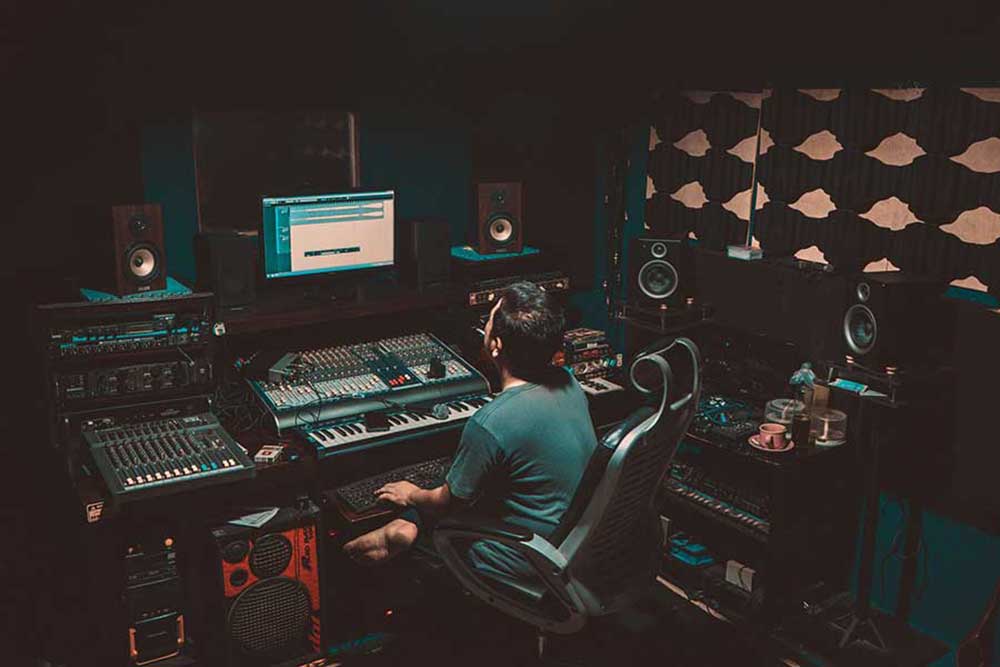Composing, or the act of writing or creating a piece of music, is a process that has been evolving over many years. In a previous blog, I discussed musical creation through improvisation and notation. While these have been positively affected by increased technological discovery, composition itself has also become more widely accessible through digital audio workstations (DAWs). Individuals with limited musical background can create arrangements of looped recordings. Musicians with more experience can record digital audio or MIDI sequences with software instruments. Composition programs can give virtually any user the opportunity to think in sound and create original pieces or arrangements (Bauer, 2020). Through the rise of technology, music production is becoming more of a possibility to independent artists.
Arranging musical recordings, whether they be short loops or full-length tracks, is a popular way of producing music. While arranging the works of others can be achieved with traditional music notation and live performance, digitalization of music recordings has made this process relatively easy for anyone with a computer and internet connection. Using DAWs such as FL Studio (Fruity Loops), BandLab, GarageBand, and more, users can slice, duplicate, alter, and recombine recordings to make new versions of pieces (Bauer, 2020). Additionally, producers could select short snippets from existing recordings to use in their own original works with approval from the original artist or by using royalty free tracks in the public domain. Though constructing songs with loops may eliminate the need to record original content, this creative process still requires knowledge of musical form, timbre, and audio editing to ensure that the piece sounds cohesive.
Another way technology allows music producers to create music without recording acoustic instruments is Musical Instrument Digital Interface, or MIDI. MIDI allows musicians to create instrument sounds using piano roll input—a form of graphical notation—or record sequences in real time with MIDI controllers. These sequences can be assigned to an almost infinite number of instrument sounds that can be tweaked inside a DAW using editing a variety of effects or instrument parameters. This method of composition requires some musical literacy and technical ability as users must have notation skills or rhythmic accuracy when recording. Students can benefit from MIDI composition as they are engaged in the manipulation of sound, an activity that requires critical and imaginative thinking (Bauer, 2020). Most amateur and professional DAWs such as Logix Pro X, Pro Tools, and others have extensive MIDI capabilities with little latency to accommodate seamless recording and playback. Composing with MIDI instruments is foundational for many popular genres in music today.
Finally, digital recording quality and ease has been greatly impacted by the decreased cost of recording equipment and DAWs. For instance, a currently popular electrocpop artist named Billie Eilish recorded most of her hits in a bedroom studio with her brother. Similarly, Sufjan Stevens, a popular indie folk artist, recorded his entire album “Greetings from Michigan” using a Shure SM57 microphone (currently sold at approximately $100). These recordings have received numerous awards and were made with equipment that is accessible to the public. Anyone with a passion and dedication to music can compose their own original works if they have access to the right resources (most of which are considerably inexpensive). Students can benefit from recording live instruments by learning to practice diligently before tracking songs, create vocals and accompaniments, and ultimately express themselves through music.
In closing, the increase in technological resources for music composition has opened the door to many different genres and pieces. As an educator, I am excited by the possibilities that my students have to preserve their original compositions in a variety of ways—some of which did not exist when I was their age. Music composition is a meaningful way to express ideals and individuality, engage in creative thinking, and develop one’s personal musicianship (Bauer, 2020). I hope that it continues to be more expansive and accessible as technologies continue to develop.
References
Bauer, W. I. (2020). Music learning today: Digital pedagogy for creating, performing, and responding to music (2nd ed.). Oxford University Press. https://doi.org/10.1093/oso/9780197503706.001.0001


Comments
Post a Comment